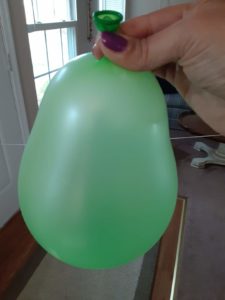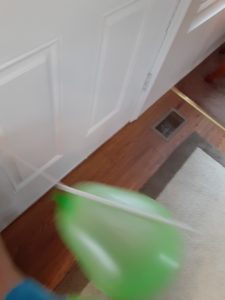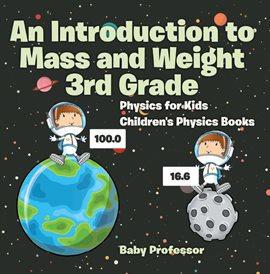Have you ever wondered why we don’t all fall off the earth? What is holding us down so we don’t all float away? How do rockets get into space? How do objects stop moving or start moving? Let’s dig into some laws of physics to find out!
A long time ago a guy named Sir Isaac Newton discovered 3 ideas that had to do with the physics of motion. They were tested and verified many times and have become known as Newton’s Three Laws of Motion (physics4kids).

Newton’s 1st Law:
An object at rest will stay at rest and an object in motion will stay in motion unless a force acts upon it (physics4kids).
This is a fancy way of saying if something is not moving, it won’t move until you do something to it. For example: A rock sitting on the top of a hill will not roll down it unless it is pushed. Or a rock won’t stop moving until it runs into a tree at the bottom of the hill.


Newton’s 2nd Law:
The greater the mass of the object, the more force is required to accelerate the object (ducksters).
What is mass? Mass is the amount of matter in an object or anything you can physically touch (coolkidfacts). Basically, it is going to take a great amount of force to move a large object, like say a sofa, and very little amount of force to move a feather. This also means the harder you hit something, the farther it will go. Goal, anyone?

Newton’s 3rd Law:
For every force there is an equal and opposite reaction or force (physics4kids).
For example: To launch a rocket into space, there has to be a force that pushes up (the engines of the rocket) as the force of gravity (that force that keeps us from floating off the earth) is pushing down. For the rocket to leave earth, the force of the engines must be greater than the force of gravity trying to hold the rocket to earth, otherwise the rocket will just stay on the ground.

Supplies:

Instructions:
Step 1: Tie one end of string to a door knob or chair.

Step 2: Pull out 6-10 feet of string so that the rocket has a good bit of string to travel on.

Step 3: Feed the string through the straw.

Step 4: Tie off the free end of the string to another chair or object.
Step 5: Blow up the balloon (you may need an adult to help you with this) and hold end together, do not tie it off.

Step 6: Carefully tape the balloon to the straw.

Step 7: Let go of the balloon and watch how far/fast it travels the string.

Step 8: You may want to try different angles with the string just to see what happens. For instance, what happens if the balloon has to go up the string? Does it go faster if the string is angled down?
Hoopla E-Books
Sir Isaac Newton by Fernando Gordon
Scientists can change the world! Sir Isaac Newton’s experiments helped us understand mass. This title introduces budding scientists and engineers to Sir Isaac Newton whose discoveries changed the course of science. Photos and illustrations bring the stories of this great mind to life, and a quiz lets readers test their newfound knowledge. Aligned to Common Core Standards and correlated to state standards. Applied to STEM Concepts of Learning Principles.
Makerspace Projects For Understanding Newton’s Laws Of Motion by Barbara Martina Linde
In this detailed guide to Newton’s laws of motion, readers will be encouraged to take learning into their own hands with three engaging makerspace projects. Young scientists will gain an understanding of the importance of these principles in scientific endeavors and in everyday life. They’ll also learn about Sir Isaac Newton and how he discovered the laws of motion. Detailed instructions and colorful photographs will help students complete the projects and make connections with the new information they are learning.
Forces And Movement (Push, Pull, Fast, Slow And More) by Baby Professor
Let’s get moving, and learn the science behind it, too! This book is an adrenaline-pumping and mentally-stimulating educational resource that your child would love to own. It explains in detail the dynamics of actions but without confusing your child with big words. It’s basically physics taken down to the level of a 2nd grader in order to ensure interest and full understanding. Secure a copy today!
An Introduction To Mass And Weight 3rd Grade by Baby Professor
Let’s get moving, and learn the science behind it, too! This book is an adrenaline-pumping and mentally-stimulating educational resource that your child would love to own. It explains in detail the dynamics of actions but without confusing your child with big words. It’s basically physics taken down to the level of a 2nd grader in order to ensure interest and full understanding. Secure a copy today!
Let’s Explore Gravity by Walt K. Moon
What are the differences between mass and weight? It’s something that you can calculate! At third grade, your child is moving towards the more difficult aspect of physics. The purpose of this book is to make the shift as smooth and easy as possible. Pick a copy for your child, especially if you notice him/her struggling with the subject.
Science Lab: Motion And Forces by Rebecca E. Hirsch
What are the differences between mass and weight? It’s something that you can calculate! At third grade, your child is moving towards the more difficult aspect of physics. The purpose of this book is to make the shift as smooth and easy as possible. Pick a copy for your child, especially if you notice him/her struggling with the subject.











